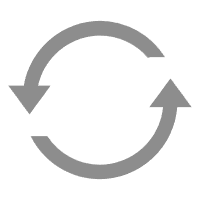Having watched the previous CWUP-40 Chiller Temperature Stability Test, a follower commented that it is not accurate enough and he suggested to test with scorching fire. S&A Chiller Engineers quickly accepted this good idea and arranged a “HOT TORREFY ” experience for the chiller CWUP-40 to test its ±0.1℃ temperature stability. First to prepare a cold plate and connect the chiller water inlet & outlet pipes to the cold plate’s pipelines. Turn on the chiller and set the water temperature at 25℃, then paste 2 thermometer probes on the water inlet and outlet of the cold plate, ignite the flame gun to scorch the cold plate. The chiller is working and the circulating water quickly takes away the heat from the cold plate. After 5-minute burning, the temperature of chiller inlet water rises to about 29℃ and can not go up anymore under the fire. After 10 seconds off the fire, the chiller inlet and outlet water temperature quickly drop to about 25℃, with temperature difference stable within the range of ±0.1℃. Clearly, even under high temperature “torrefy”, this chiller can still play its high-precise temperature control ability to full.



